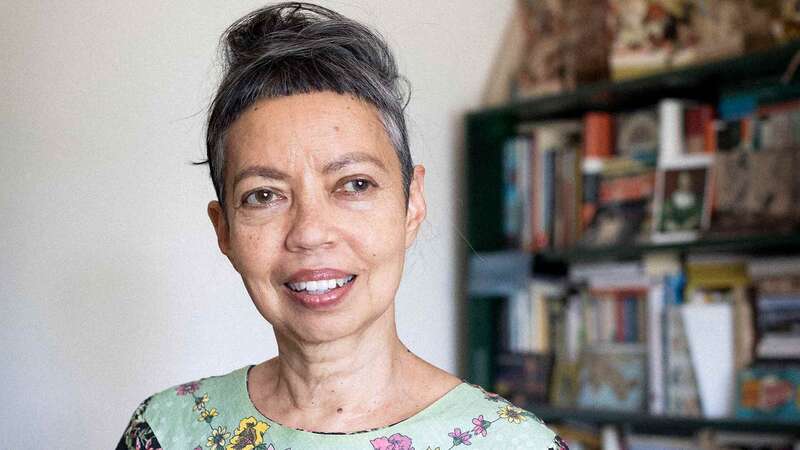You are viewing your 1 free article this month. Login to read more articles.
Flora Delargy | 'There is such a warmth to this story...It really caught my imagination'
 Charlotte Eyre
Charlotte EyreCharlotte Eyre is the former children’s editor of The Bookseller magazine, and current children's books previewer. She has programmed ...more
Flora Delargy’s first book is an inspiring tale of how the ’Carpathia’ saved survivors from ’The Titanic’

Charlotte Eyre is the former children’s editor of The Bookseller magazine, and current children's books previewer. She has programmed ...more
For her debut picture book Flora Delargy, an author and illustrator from Northern Ireland, decided to tell the lesser-known part of the “Titanic” story, about the brave captain who turned around his ship, “Carpathia”, to rescue survivors from the freezing Atlantic.
The tagline of Rescuing Titanic is “A Tale of Quiet Bravery in the North Atlantic” and Captain Rostron, who made a series of decisions that saved more than 700 people, was indeed a courageous man.
There is such a warmth to this story and what the captain and crew achieved that night is just amazing. It really caught my imagination, the contrast between this huge ship and the little workhorse of a ship [that came to the rescue]
On 12th April 1912, “Carpathia” was crossing the Atlantic when its wireless operator, Harold Cottam, received an SOS from “Titanic”. He woke Rostron, who immediately ordered the ship to turn around and began preparing lifeboats, slings and ladders. Rostron put his own crew and passengers at risk by pushing his ship beyond its top speed to reach the “Titanic” as quickly as possible, even turning the heating off to divert as much power as possible to the steam engine.
“At the end of the day, he was putting his own crew and passengers at risk by changing course and pushing that ship beyond the speed it was capable of,” Delargy says. “Going at that speed, in the pitch black and surrounded by icebergs, it was incredibly risky.”
In the book, Delargy jumps between the action on the “Carpathia” and the “Titanic” and tells the stories of several other characters who were instrumental in what happened during the crisis. Not only Cottam, who didn’t sleep for two and a half days because he was sending messages out with the names of the survivors, but also 17-year-old Bernice Palmer, who took what is now believed to be one of the few photographs of the iceberg that sunk “Titanic”, and Molly Brown, a survivor who raised funds to pay for medals for the crew of the “Carpathia”.
Delargy is based in Belfast and has some connection to the “Titanic” story—her grandfather and great-grandfather both worked in the city’s shipyards—but even she says she didn’t know much about the “Carpathia”, which is still just a footnote in the telling of the tragedy. “I was casting around for stories online and it came up,” she says. “I thought it was brilliant. There is such a warmth to this story and what the captain and crew achieved that night is just amazing. It really caught my imagination, the contrast between this huge ship and the little workhorse of a ship [that came to the rescue].”
After reading around the subject, including Rostron’s autobiography and transcripts of the inquiries, conducted later, into why the “Titanic” sank, Delargy put pen to paper, and decided to not only tell the human stories but also give details about the technical practicalities of life on a ship, such as how the navigational tools work. Working out an abstract way to show how, for example, Morse code works, was a surprisingly fun part of the process, she says.
Delargy also uses a variety of perspectives (one of my favourite spreads shows the view from above the Captain’s head, down to the map underneath his hands), to keep up a sense of drama, and many of the dramatic spreads were inspired by Soviet illustration. “I’ve always loved Soviet artists; I think it’s something to do with the weight of the shapes on the page and the dramatic compositions,” she says. “With this project, that style lent itself to the men working on the deck, shovel- ling coal. There was a similarity in the movements and the shapes.”
Despite the shifts in perspectives and emphasis, the story flowed, says Delargy, because “the facts, the brilliant things people did, speak for themselves”. By contrast, the most challenging thing was, for her, drawing the “Titanic” itself. Everyone is so familiar with what it looked like that re-creating her own version was rather daunting, she says.
Changing the picture
Rescuing Titanic may be Delargy’s first book, but she has already developed a love for narrative non-fiction because it enables her to show the human side of a story while also visually describing how things work. She started working on the book while doing an MA in children’s book illustration at the Cambridge School of Art. “I suppose I came to illustration quite late,” she says. “I’ve worked in finance, I worked in PR, but I felt I was drifting and I never felt settled in what I was doing. When I was made redundant from my PR job, I thought, ‘Now is the time to take the leap’.”
Her final project was a 40-page overview of her “Carpathia” story, which attracted the eye of her editor Lucy Brownridge, and only weeks later Quarto sent her a publishing contract. “It was a great surprise. It was wonderful. I love so many books in the Wide Eyed and Frances Lincoln lists, so I knew they would do a fantastic book.”
Her fledgling career has also been boosted by support from the Bologna Children’s Book Fair, which chose artwork she created, based on W H Auden’s poem “Night Mail”, for its illustrators’ exhibition in 2019. Not only did that commendation make Delargy believe she could do illustration as a job, it also brought her to the attention of Children’s Books Ireland, which has been “brilliant” at giving support and advice.
She is hoping to be able to have a book launch this summer (and has already recorded a promotional video featuring shipbuilding artefacts her grandfather and great-grandfather passed down), and is thinking about what her second book for Quarto will be about. She also hopes her book will give Captain Rostron, who was later knighted, his day in the sun. “He was incredible... but not one for attention. It’s nice to think that this book will give him and his crew their moment in the spotlight.”









